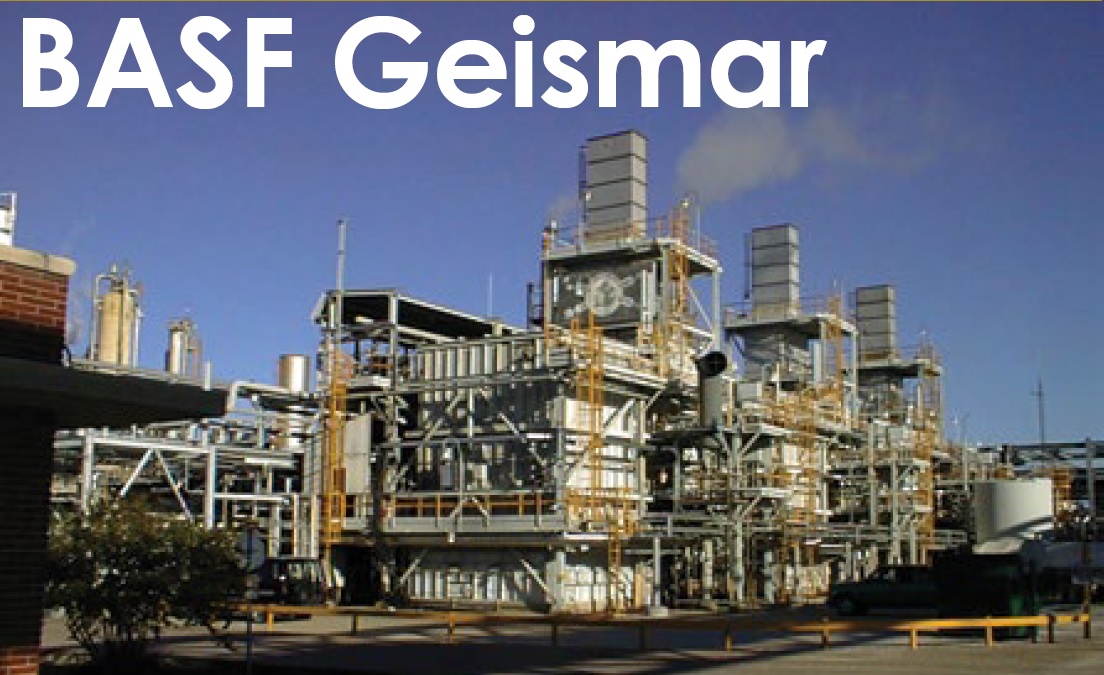
BASF Geismar
Owned and operated by BASF Chemical Co
85 MW, gas fired, two 1 × 1 Frame 6-powered cogeneration units (one with an unfired HRSG, one fired) plus four conventional boilers and one small steam turbine/generator, located in Geismar, La
Plant manager: Graham White
Challenge. Plant’s HRSG duct-burner firing rate (fuel control valve) was controlled solely by the Boiler Master controller based entirely on steam demand. If it called for more steam, the gas valve opened to send more fuel to the duct burners which, in turn, produced more steam. This control scheme ignored all other operating parameters, with the exception of high duct temperature, to control the steam production rate.
But other parameters also are important to control to protect the equipment. What if the steam temperature is too high, or the drum level too low, or the burner pressure too high, etc? While there are specific controls designed to regulate these important parameters, malfunctions can occur that allow them to drift out of control with the consequence of failure being greater at higher firing rates.
The duct-burner firing controls (Boiler Master) did not monitor these important process parameters when deciding the firing rate; therefore, the unit was at risk of equipment damage or of tripping if the firing rate pushed the process parameters too far out of range.
Solution was to create some controllers that monitored these other important equipment protection parameters and allow them “to have some say” in the firing rate. As a process-control improvement initiative, “firing overrides” were programmed based off of critical process parameters. Besides the existing duct-temperature limit, overrides for the following parameters were installed:
- High steam temperature.
- High steam flow.
- High burner pressure.
- Low steam-drum level.
- High steam-drum level.
Most of the time, these critical process parameters would remain within the desired range and thus the overrides would not be triggered or have any effect upon the process (that is, the output value from each override would be zero).
But suppose, for example, an issue developed with the HRSG desuperheater system which resulted in insufficient steam cooling. Instead of continuing to fire at high rates that could produce excessively high steam temperatures (high enough to damage the superheater tubes or downstream piping), the high-steam-temperature override controller output value would increase, and this would lower the firing rate by automatically reducing the Boiler Master signal value.
A warning alert would activate to notify the operator that an override was active, requiring investigation. It was considered abnormal/unacceptable to continuously operate with an active override.
This “override” philosophy could include other process parameters that could be affected by burner firing rates. High drum pressure, high stack emissions, high tube temperature, or poor steam quality (possibly resulting from carryover), for example, also could be used to override firing rates.
When using these types of override controllers, consider the consequences of a failed instrument providing information to the override. In BASF Geismar’s case, the output range of each override controller was limited to the minimum amount believed necessary to correct the process abnormality.
Results. On several occasions since their implementation, the overrides have kicked in to limit the duct-burner firing rate, thereby protecting equipment. The most frequent override to activate was high steam temperature. Some of these incidents were caused by desuperheater valves failing closed, a manual valve inadvertently left closed during startup, and failure of a temperature transmitter used to calculate the appropriate desuperheater water flow rate.
On one occasion, a freak incident occurred when a piece of steel inside the steam drum detached, partially plugging the drum outlet pipe. The obstruction reduced steam flow through the superheater. This led to very high steam temperatures, activating the override to cut back the firing rate and prevent the drum from over-pressurizing until the failure could be identified and the unit shut down. Staff believes the high-steam-temperature override controller has averted major equipment damage more than once.
Project participants:
J C Rawls, technology engineer (utilities department) and Troy Braud, DCS programmer

